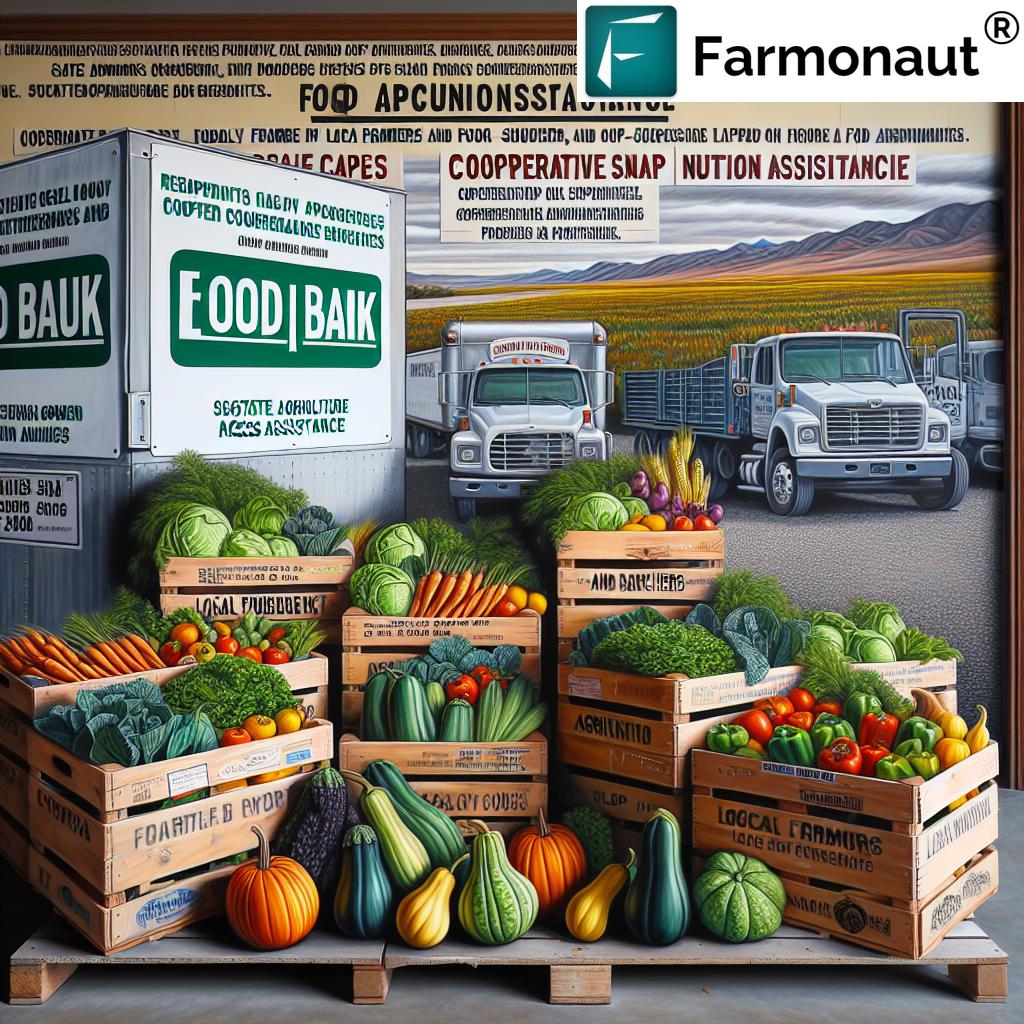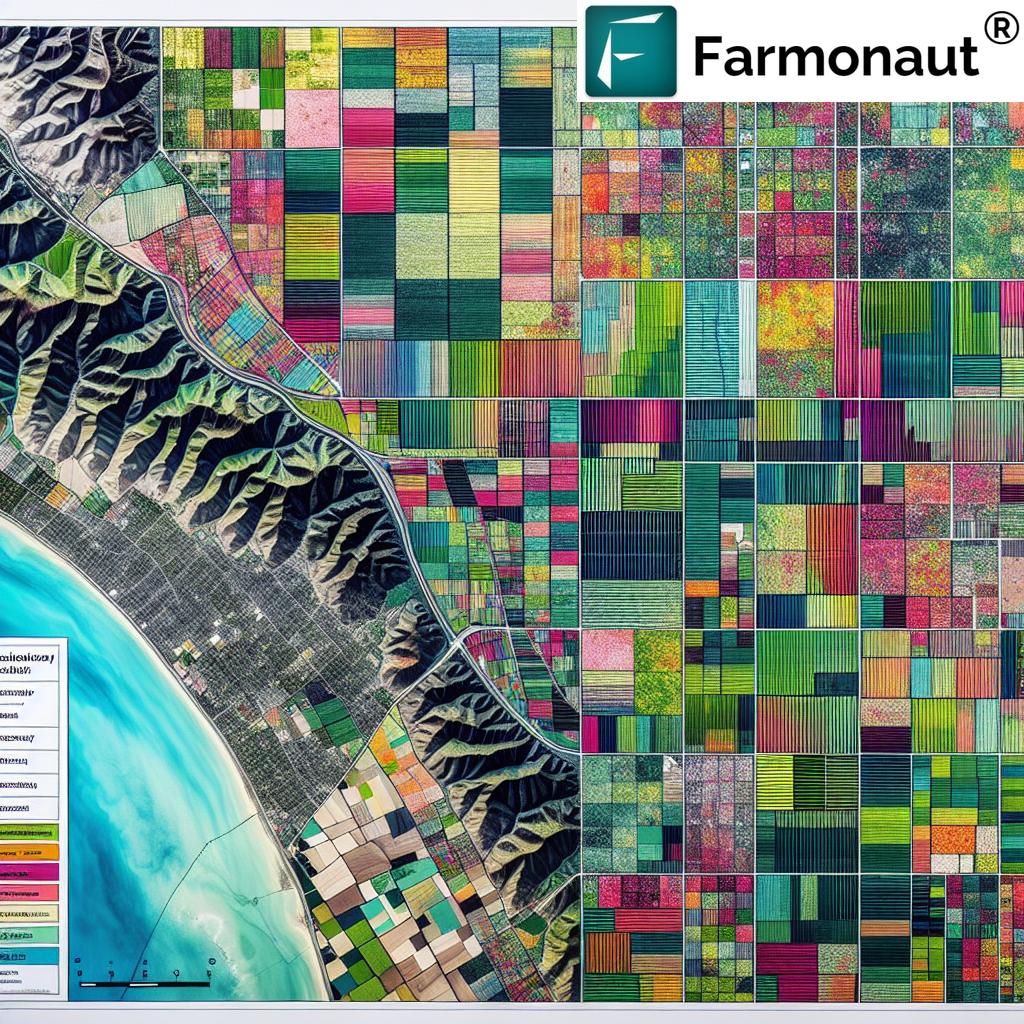Nevada Food Security Program Cut: Local Agriculture Impact
Introduction: The Challenge Facing Nevada’s Food Security
In recent years, Nevada’s agricultural sector and food security programs have experienced both significant growth and unexpected disruption. The state, known for its resilient communities and unique ecosystem, has relied heavily on local agriculture, innovative programs, and crucial federal support to ensure all Nevadans—especially our most vulnerable—receive the nutrition they need.
Yet, the abrupt federal funding cuts agriculture programs such as the Local Food Purchase Assistance Cooperative Agreement Program (LFPA) and Local Food for Schools Cooperative Agreement Program (LFS) have upended this progress. This decision threatens to reshape the landscape for local farmers, producers, schools, families, and communities that depend on locally sourced produce Nevada for their sustenance and economic wellbeing.
As we explore the impact of Nevada agricultural funding cuts, our goal is to highlight not only the challenges but also the opportunities for collaboration and sustainable growth. By focusing on the core themes of sustainability, community resilience, and innovative technology adoption, we look to chart a brighter, more food-secure future for Nevada.
Background: The Federal Programs Accelerating Food Security in Nevada
In the quest to provide community food access Nevada and strengthen local food programs Nevada, the United States Department of Agriculture (USDA) launched pivotal cooperative agreement initiatives:
- Local Food Purchase Assistance Cooperative Agreement Program (LFPA): Directed millions in federal funds toward local farmers and food banks statewide for purchasing locally sourced produce and proteins. This program helped shore up food supplies for vulnerable families while supporting sustainable agriculture Nevada.
- Local Food for Schools Cooperative Agreement Program (LFS): This was designed specifically to provide healthy, fresh food to schools and school districts using produce from local farms and ranches, fostering nutrition assistance Nevada and instilling the value of agriculture early in life.
Together, these federally backed programs created a resilient food supply chain and direct support for Nevada’s agricultural sector. Since 2023, over $6 million in agricultural product purchases benefited at least 265 local producers and reached more than half of our school districts. This is a testament to the sustained impact cooperative agreements can have on food security in Nevada.
With both programs terminated, we now face a critical gap: The Home Feeds Nevada program—once powered by robust federal funding—has less than $139,000 left in available funds (as of March 2025), projected to run out by June 30, 2025.
Impact on Food Security Programs and Local Communities
The termination of LFPA and LFS marks more than just a funding shortfall: it is a direct hit to the network that connects local farmers and community organizations with vulnerable Nevadans who depend on locally sourced produce Nevada.
How the Loss of Federal Support Threatens Nevada’s Food Security
- Depletion of Essential Resources: With current funding dwindling, food banks can no longer guarantee a steady supply of fresh fruits, vegetables, meats, and dairy from local sources. This threatens nutritional quality and food security in Nevada, especially for families experiencing hardship.
- Ripple Effects Across Communities: Rural and urban communities alike will feel this shift, as the loss of consistent demand creates downstream effects on small farms, ranches, and access to healthy food in schools.
- Tribal Agriculture Support Nevada: Tribal cooperatives and producers, such as the Pyramid Lake Paiute Tribe, are among the hardest hit, jeopardizing local food sovereignty and economic stability.
As we assess these impacts, it’s clear that Nevada agricultural funding is not just a line in a budget—it is a cornerstone of our collective well-being and resilience.
Consequences for Farmers, Ranchers, and Producers: The Local Ripple Effect
The backbone of Nevada’s agricultural sector—our farmers, ranchers, and producers—are now facing a period marked by deep uncertainty. Upward of 265 local farms and ranches benefitted from these cooperative agreement programs, enabling them to:
- Receive fair compensation for their yields
- Plan, invest, and steadily expand their operations
- Build lasting relationships with schools, banks, and community organizations
The federal funding cuts agriculture have abruptly removed a crucial layer of financial stability. Purchases that previously sustained growers are now vanishing, with stark warnings from tribal leaders and agricultural experts echoing across Nevada. As Tribal agriculture support Nevada stalls, and with private contracts harder to secure, many farms risk reducing operations or closing altogether.
These issues are compounded by rising input costs, volatile climate conditions, and labor shortages—problems that are exacerbated when predictable state and federal support evaporates.
Broader Food Insecurity: Vulnerable Families and SNAP Recipients at Risk
Nearly one in six Nevadans depend on the Supplemental Nutrition Assistance Program (SNAP)—a statistic that underscores why these cuts reverberate so widely. The Nevada Food Security Program Cut impacts:
- Children and School Districts: Over 62% of Nevada SNAP recipients live in households with children. With program cuts, schools lose out on fresh, local options, affecting the daily nutrition crucial for healthy development.
- Low-Income and Rural Communities: Already at risk due to fewer retail options and limited transportation, rural areas face further isolation from fresh, locally sourced produce Nevada.
- Urban Food Deserts: Cities like Las Vegas and Reno, despite their size, contain neighborhoods with limited food access. Program cuts erode community safety nets, putting even more pressure on local food bank systems.
Every aspect of nutrition assistance Nevada and community food access Nevada is interconnected, and the ripple effect of these funding decisions cannot be overstated.
State and Community Responses: Charting Sustainable Solutions
While the immediate aftermath of the Nevada agricultural funding cuts is severe, it has galvanized collective action across the state. We are witnessing a surge in advocacy, legislative initiatives, and strategic reallocation of resources to keep community food access Nevada alive. Key responses include:
- Senate Bill 233 (SB233): Backed by Nevada State Senator Fabian Doñate, this measure aims to double the state’s investment in the Home Feeds Nevada program to $800,000, helping support operational continuity and uplifting food banks statewide.
- Community Organizations Mobilizing: Leadership at the Food Bank of Northern Nevada and Three Square Food Bank are calling for new funding solutions and encouraging donations, making it possible for all Nevadans to participate in sustaining nutrition assistance Nevada.
- Donations and Public Support: Ongoing and future fundraising will be vital for plugging budgetary holes and maintaining the reach of essential food security initiatives.
As efforts ramp up, the vision is clear: find new ways to fund, innovate, and support local farmers and community food programs—ensuring every Nevadans’ right to healthy, local, and affordable nutrition.
Looking for technological solutions to boost your farm’s productivity, sustainability, and traceability? Visit the Farmonaut Carbon Footprinting page to explore emissions tracking for compliance and environmental stewardship.
Sustainability, Environment, and the Path Forward
The Nevada Food Security Program Cut raises timely questions about our long-term food resiliency and environmental stewardship. With sustainable agriculture Nevada at the heart of the future, priorities should center on:
- Building Local, Sustainable Supply Chains: Empowering producers and community organizations with investment and technology can create more robust, transparent, and climate-smart supply chains.
- Diversification of Funding: Relying solely on federal funds exposes communities to risk. State, local, and private investments must supplement traditional grants.
- Adoption of Agri-Tech: Platforms like Farmonaut deliver advanced monitoring, advisory, traceability, fleet management, and carbon tracking—key to data-driven, ecologically responsible, and profitable farming operations.
For enhanced transparency in supply chains, see Farmonaut’s Blockchain-Based Product Traceability solution—boosting trust in locally sourced produce Nevada.
Are you an agribusiness or cooperative needing better logistics? Explore Farmonaut Fleet Management for optimized vehicle use, reduced operational costs, and safer agricultural transport.
Precision Agriculture: Farmonaut’s Role in Sustaining Nevada Agriculture
As we collectively address the food security in Nevada crisis, bringing in advanced agri-tech solutions can empower our local producers for a resilient future.
How Farmonaut Supports the Nevada Agricultural Sector
- Satellite-Based Crop Health Monitoring: Access critical real-time crop health data (NDVI, soil moisture, pest warning) directly through Farmonaut’s user-friendly mobile and web platforms.
- Jeevn AI Advisory: Enhance your decision-making with AI-powered, personalized guidance covering irrigation, weather, and overall farm management.
- Blockchain-Based Traceability: Meet the growing demand for transparency in food supply chains with Farmonaut’s blockchain-driven traceability tools.
- Fleet and Resource Management: Large farm operations and cooperatives benefit from fleet management, reducing operational expenses and managing machinery efficiently.
- Carbon Footprinting Tools: Track, report, and minimize emissions, creating a sustainable path for compliance with environmental directives and eco-labeling.
Flexible Access: Web, Android, iOS, and API Integration
Farmonaut makes these tools available to individual farmers, agribusinesses, government bodies, and NGOs via native Android, iOS apps, web portals, and even with easy-to-integrate APIs and API developer documentation.
Support for All Farm Sizes and Business Models
Whether you manage family farms, large-scale agribusinesses, or work within state/school food procurement agencies, Farmonaut’s solutions can scale to your operation’s unique needs. There are affordable subscription packages for individuals, as well as enterprise-grade options for organizations and governments.
Want to comprehensively manage large estates or government agricultural projects? Check out our Large-Scale Farm Management Platform for holistic monitoring, reporting, and resource optimization.
Comparison Table: Nevada Food Security Before and After Funding Cuts
To visualize the profound changes caused by the Nevada Food Security Program Cut, we have created a comparison of key metrics outlining the state’s food security and agricultural health:
| Metric | Before Funding Cut (Estimated) | After Funding Cut (Estimated) |
|---|---|---|
| Number of Local Farms Supported | 265+ | Less than 100 (projected) |
| Percentage of Locally Sourced Produce in Stores | 14 – 18% | 6 – 8% (decline) |
| Community Food Security Score* | 7.2 / 10 | 4.8 / 10 |
| Employment in Agriculture Sector | 4,000+ jobs | 3,100 (est., ~22% loss) |
| Access to Fresh Produce (% of Population) | ~76% | ~59% |
*Based on aggregated nutrition, food availability, and community resilience indicators.
FAQ: Nevada Food Security Program Cut & Sustainable Agriculture
What is the main impact of federal funding cuts on Nevada’s food security?
Federal funding cuts have deprived food security in Nevada programs, like LFPA and LFS, of the resources needed to provide consistent, nutritious food to vulnerable populations. This has resulted in fewer locally sourced produce Nevada options in schools, food banks, and households, challenging both farmers’ livelihoods and access for families.
How do these program cuts affect Nevada’s farmers and producers?
Support for local farmers and producers has diminished drastically. Many small farms and ranches depended on steady demand through state and federal buying agreements. With their loss, many face shrinking revenues, layoffs, or closure—amplifying economic instability across rural and tribal communities.
What steps is Nevada taking to address this crisis?
The state legislature is considering measures such as SB233 to increase direct support for food security programs. In addition, community organizations are fundraising, while residents can contribute directly to keep these vital services operational.
Can technology aid Nevada’s sustainable agricultural transition?
Absolutely. Agri-tech platforms like Farmonaut provide access to affordable precision farming, resource optimization, blockchain traceability, and environmental monitoring—fostering an efficient, sustainable, and competitive sector.
How can individuals and organizations access Farmonaut’s features?
Farmonaut can be used via web app, Android/iOS apps, or by integrating Farmonaut’s APIs into other platforms. Explore developer integration through the Farmonaut API Developer Docs.
Conclusion: A Roadmap for Community Resilience
The Nevada Food Security Program Cut represents a defining moment for the future of agricultural policy, sustainability, and social equity across the state. As state agencies, community organizations, school districts, tribal cooperatives, and producers unite to advocate for funding, innovative technologies and diversified support mechanisms will be essential.
- Restoring and Growing Support: Advocacy for stable public investment is critical to rebuild community food access Nevada and boost the effectiveness of nutrition assistance Nevada initiatives.
- Leveraging Agri-Tech: The adoption of Farmonaut-like solutions—for monitoring, compliance, traceability, and carbon tracking—offers a sustainable, scalable way forward.
- Strengthening Community Resilience: Ultimately, our commitment to a secure, equitable, and healthy food system will determine not only the welfare of today’s Nevadans but also the legacy we leave to future generations.
Together, by combining robust policy, innovative technology, and grassroots action, Nevada can rise to this challenge and create a model for sustainable agriculture Nevada nationwide.
















